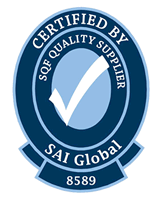At a recent company visit we spoke with a prospect about the cost of their packaging. After telling us what they paid they went on to discuss the inconsistent quality and poor delivery of their provider. This got us thinking… most people don’t calculate the true cost of their packaging.
Quality
There are obvious costs associated with inconsistent quality. We often think of loss of product. If the packaging is not stable it could tear or case spills. However, what we don’t consider is the downtime costs associated with poor quality packaging. How long do the machines stay dormant and employees unproductive due to the need to wait for replacement product.
The above assumes the lack of quality is identified prior to going out. If the packaging quality issue is realized after the product is on the shelf, the cost can be even greater. Now you’re looking at a greater replacement cost and potentially brand erosion.
Delivery
Downtime is one cost we immediately think of when talking delivery. If the anticipated delivery date is off it can throw an entire schedule off. If a store is waiting for delivery on the product that has now been postponed that could mean that your competitors’ products are on the store shelf instead of yours which translate into a loss of sales.
Customer Demands
It’s not enough to make sure that the packaging has the required price, quality and delivery. You also need to ensure that it fits your customer’s requirements. With sustainability being pushed from many different sources (Millennials, Europe, Municipalities) packaging requirements are ever changing. Working with a company that focuses on sustainability is critical.
It’s not enough to understand how to incorporate recyclable, compostable, and biodegradable materials if the manufacture of these products is not environmentally friendly. Sustainability is a program that should be prevalent throughout the entire process of manufacturing the package.
Packaging Innovations
Materials matter when it comes to comes to sustainability but that’s not the only consideration. Understanding materials is critical when determining best options for packaging. For example: what do you do when material prices increase? Looking for alternatives is a possibility but it needs to be done logically. Yes you need packaging that is priced reasonably but you also need to maintain quality. Characteristics such as taste and smell need to be preserved.
Determining what to pay when it comes to packaging needs, one must consider many factors. What if you made all your purchases based on the lowest price? The soda that costs 25% less but makes you sick every time. How many times would you buy it before you decided to change brands? Or the crackers that you can only find on occasion. How many times would you wait to find them before you purchased another brand?
Packaging that is of poor quality can mean loss of product or downtime on-site waiting for replacement. Poor delivery could mean that your competitors’ products are on the store shelf instead of yours. Do you know the true cost of your packaging?
Determining what to pay when it comes to packaging needs, one must consider many factors. What if you made all your purchases based on the lowest price? The soda that costs 25% less but makes you sick every time. How many times would you buy it before you decided to change brands? Or the crackers that you can only find on occasion. How many times would you wait to find them before you purchased another brand?
Packaging that is of poor quality can mean loss of product or downtime on-site waiting for replacement. Poor delivery could mean that your competitors’ products are on the store shelf instead of yours. Do you know the true cost of your packaging?









